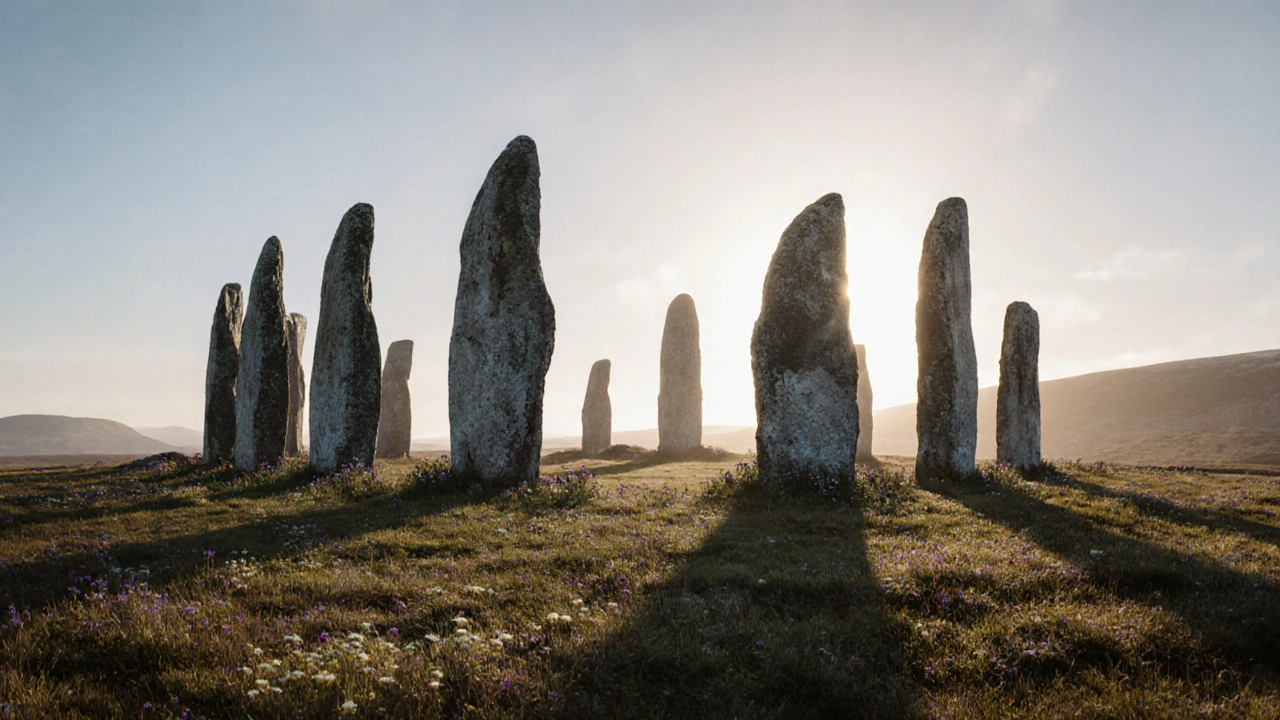Standing Stones in Scotland: Ancient Monuments, Myths, and Where to Visit
When you see a standing stone, a single, upright stone erected by ancient peoples, often as part of a larger ceremonial or astronomical arrangement. Also known as megalith, it is one of the oldest human-made structures still visible across the Scottish landscape. These aren’t just rocks—they’re time capsules. Some were placed over 5,000 years ago, long before the Pyramids of Giza were built. In Fife and across Scotland, they dot hillsides, moors, and coastal cliffs, quietly watching over the land through centuries of change.
Many stone circles, groups of standing stones arranged in a circular or oval pattern, often linked to seasonal rituals or celestial events like the famous Callanish Stones on Lewis or the Ring of Brodgar in Orkney, align with the sun and moon. Archaeologists believe these weren’t just religious sites—they were calendars, meeting places, and maybe even early observatories. The people who built them didn’t leave written records, but they left behind precise alignments that still work today. You can stand inside one on the summer solstice and watch the sun rise exactly over a specific stone. That kind of engineering, without metal tools or wheels, still feels impossible.
Not every standing stone is part of a circle. Some stand alone—lonely sentinels on a hilltop, or near old burial mounds. Others form lines, like the Kilmartin Stones in Argyll, stretching for miles. These aren’t random. They’re connected to burial sites, ancestral paths, and territorial markers. In Fife, you’ll find smaller, lesser-known stones tucked into farmland or hidden in woods—remnants of a world that thought the earth was alive with spirits and stories. Locals still whisper about them: that they heal, that they curse, that they hum when the wind blows just right.
What makes these stones so powerful isn’t just their age. It’s that they’re still part of living places. Farmers work around them. Hikers pause to touch them. Children climb on them. They’re not locked away in museums—they’re out there, weathered by rain, touched by hands across generations. And unlike castles or cathedrals, they don’t tell you who ruled here. They tell you who lived here—and how they saw the sky, the earth, and their place between them.
When you visit a standing stone, you’re not just looking at history. You’re standing where someone else stood 4,000 years ago, looking at the same stars, feeling the same wind. You’ll find them scattered across Scotland—in Fife’s quiet corners, on the Hebridean islands, and deep in the Highlands. Some are easy to spot. Others take a hike, a local tip, or a little luck to find. Below, you’ll find real guides to the best spots, what to look for when you get there, and why these stones still matter to the people who live near them today.

Neolithic and Bronze Age Scotland: Standing Stones and Ancient Sites
Caleb Drummond Nov 16 12Explore Scotland's ancient standing stones and prehistoric sites from the Neolithic and Bronze Age. Discover how these monuments were built, what they meant, and why they still hold power today.
More Detail